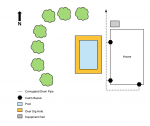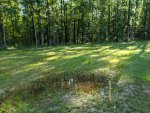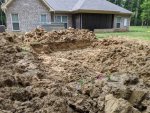Hi All,
I have been told by neighbors and other folks in my area that I should seriously consider installing a french drain and sump around my pool. Since I am early in the process, I only have a 22x48 hole at ~36" deep, I would appreciate any advice you may have on how to go about it. I get the general concept of the french drain but I am unsure how to apply it in the context of an inground pool. The soil around here seems to have a good bit of clay in it and doesn't seem to absorb water really well. (See the not to scale diagram below)
Where should the french drain be located? Sump pit?
The pool will eventually have an 8' deep hopper, do I need to install a french drain there as well?
Thank you.



I have been told by neighbors and other folks in my area that I should seriously consider installing a french drain and sump around my pool. Since I am early in the process, I only have a 22x48 hole at ~36" deep, I would appreciate any advice you may have on how to go about it. I get the general concept of the french drain but I am unsure how to apply it in the context of an inground pool. The soil around here seems to have a good bit of clay in it and doesn't seem to absorb water really well. (See the not to scale diagram below)
Where should the french drain be located? Sump pit?
The pool will eventually have an 8' deep hopper, do I need to install a french drain there as well?
Thank you.



Last edited:


